How to Make Cranberry Wine [Tastiest Recipe Yet!]
Love cranberries? Love wine? You're in for a real treat with this cranberry wine recipe! Follow our simple steps to homemade cranberry wine heaven.
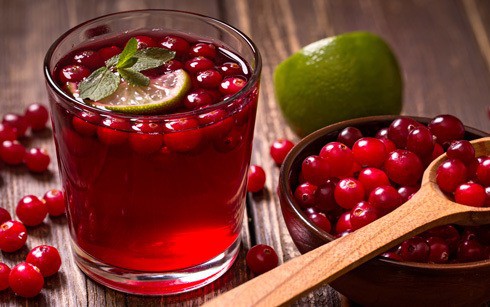
If you're interested in pushing the boat out a little and want to try something a bit different to your usual Merlot or Cabernet Sauvignon, you might want to consider cranberry wine.
When executed to perfection it can be a balanced, fruity wine with that much-needed tartness to make the hairs on the back of your hands stand up.
Rather than spending a fortune on sourcing a good quality cranberry wine, you could have a little bit of fun with some kitchen-based science and learn how to make cranberry wine yourself.
After all, wine involves the rather simple process of adding fruit and sugar together with yeast to turn all those sugars into alcohol.
Basically, any fruit with a high enough sugar content will hold up well during the fermentation process, and if you are partial to a cranberry or two then this recipe is perfect for you!
Ingredients
The following are the ingredients you need when making cranberry wine:
- 2 x 12oz cans of frozen cranberry juice or 2 x 640z bottles of unsweetened cranberry juice
- 1 ½ cups of sugar (remember if using bottled juice to reduce the amount of sugar somewhat as the juice normally has sweetener added)
- 1 packet wine yeast (dissolve in water as per instructions)
- 1 teaspoon yeast nutrient
- ¾ cup of warm water
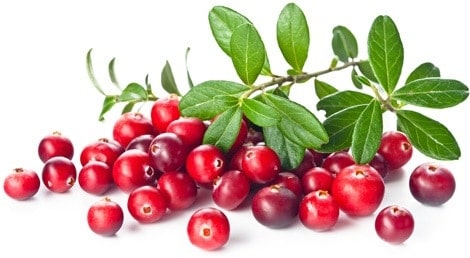
Equipment
These are the tools you'll need to make cranberry
- 1 x 1-Gallon glass jug (for fermentation)
- 1 x Rubber stopper with a glass tube (to be used with the jug)
- 12 to 18-inches of plastic tubing
- 1 x Funnel
Our Cranberry Wine Recipe
So you've gathered your ingredients and you've set up your equipment. It's time to get busy!
Step #1 – Clean and Sterilize the Glass Jug
The first step in the process of making this homemade cranberry wine is to make sure that the glass jug that you are going to use for fermenting the fruit in, is clean and sterile.
It's really important that you do this properly or there's a good chance you'll spoil your wine.
To do this, you need to wash it using your hands and soapy warm water. It's also a good idea to use a sanitizing agent. You can get a good overview of how to do this here.
Clean it thoroughly and then also rinse it thoroughly, because who enjoys wine with a soapy after taste? That’s right, no-one!
It may seem like overkill just a little but trust us. Even though the thorough washing process will be more than enough to ensure you are using clean tools and containers, it is still a good idea to put everything into the dishwasher.
This will sterilize it all with its heat. For obvious reasons, don’t put the plastic tubing into the dishwasher.
Sterilization is important because you don’t want any contaminates or bacteria forming and growing in your wine and ruining it. That would be a waste of both your time and money.
Related: Learn how to make your wine even sweeter in our guide.
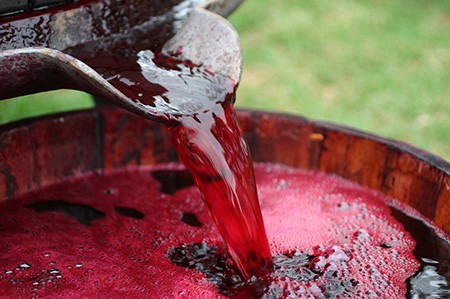
Step #2 – Prepare Your Cranberry Juice Concentrate (if that’s what you're using)
Simply take the frozen cranberry juice concentrate from the freezer and thaw it out and mix with water.
Just follow the directions outlined on the side or back of the can and use a clean container, that has also been washed recently in the dishwasher. So, that too is sterile.
About mixing water with the concentrate, you can obviously use either distilled water or juice.
Although tap water is most convenient, distilled water can help you to avoid any unwanted tastes from the faucets making its way into your cranberry wine and spoil it.
Step #3 – Mix the Water and Yeast
Next, if you are using frozen cranberry juice you need to add the sugar to the cranberry juice and then stir it until it is fully incorporated and dissolved.
If you are using just regular bottled juice, instead of the concentrate, you can add it into a clean container and start adding sugar and stirring until it is dissolved.
Related: Don't miss our huge guide to making red wine and white wine.
Step #4 – Make the Starter
Now take a tablespoon of the sugar and mix it with the yeast in ¾ of a cup of warm water. Now add this sugar into the juice and stir it until it is fully dissolved.
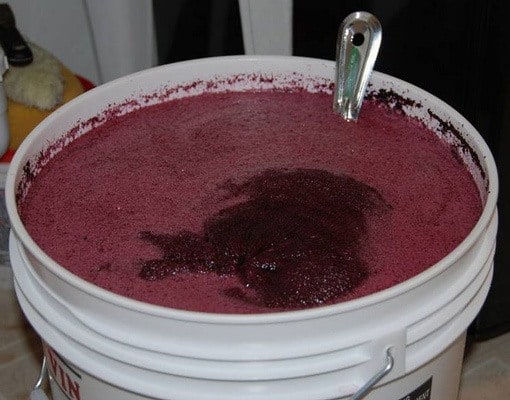
Step #5 – If Using Bottled Cranberry Juice
Take the cranberry juice and add it to a clean and sterile container, add the sugar and mix it until it is fully dissolved.
Follow the same directions as above to make the starter as directed for making cranberry wine with frozen juice.
Step #6 – Start the Fermentation Process
Take the container and place a cover over it to make sure that no contaminates or airborne bacteria can get into the solution and ruin it.
Put it to the side and leave it to stand for a few hours for the fermentation process to begin.
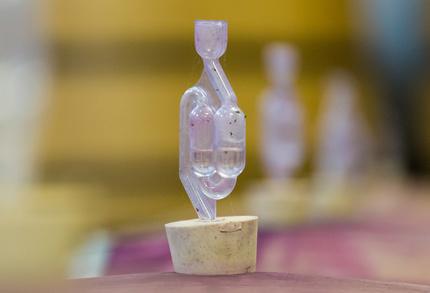
Step #7 – Transfer it to the Jug
Take the juice and pour it into the jug. Use the funnel to avoid spilling any, not only to avoid making a mess, but also to avoid wasting it and insert the rubber stopper.
Now take the plastic tubing to secure it over the glass tube’s end.
Step #8 – Store Away to Ferment
Take the jug and put it onto a shelf in a warm area, such as the basement (roughly around 21.1-degrees Celsius to 70-degrees Fahrenheit.)
Now take a container with water and place it next to the jug with the end of the plastic tubing into the water.
Always ensure that the level of water is enough that the tube ending stays under the water.
The purpose of this is to ensure that the carbon dioxide gas made from the process of fermentation.
To ensure this water escapes safely and is prevented from contaminating the jug, placing the tubing in the water will feed the gas into there.
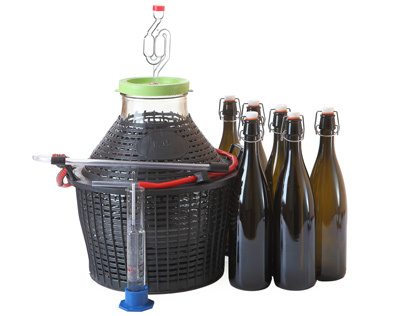
Step #9 – Bottling and Future Aging
Leave the mixture for around a month and you will be able to see if there are any air bubbles still entering the water container from the jug, and the juice being clear.
You will find sediment at the bottom of the wine jug. If all looks well, it’s time to transfer it into another jug.
Take around two to three-foot lengths of clear tubing and remove the rubber stopper from the jug and siphon the fermented juice into the new (sterilized) jar, being careful not to transfer or disturb any of the sediment.
Pour the sediment away and then use the cork stopper or screw-on cap into the wine jug and store it into a cool basement or area of your home.
You will need a room where the temperature is a constant of around 21-degrees Celsius or 70-degrees Fahrenheit.
Now, store the liquid again for between six and twelve months while your cranberry wine ages and is ready to drink.
If you keep your wine stored with a tight cap and it’s not allowed to be exposed to the air, it will remain drinkable for around two to three years.
